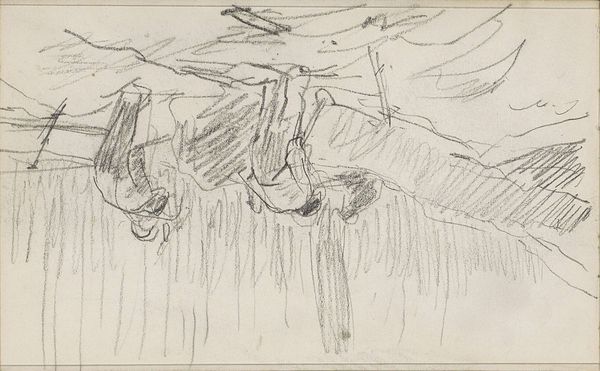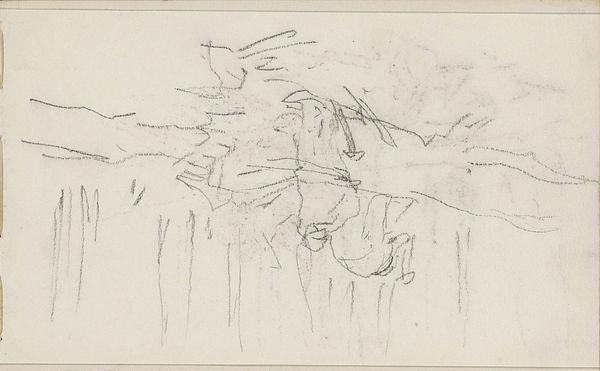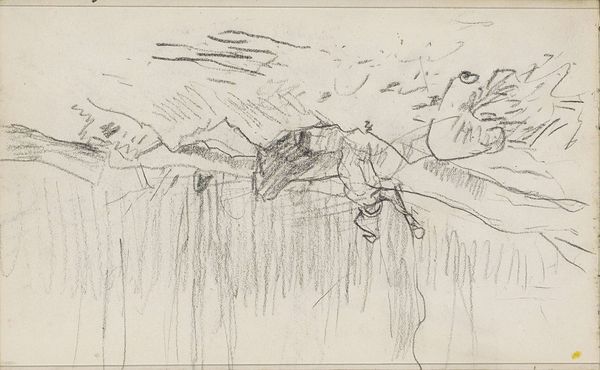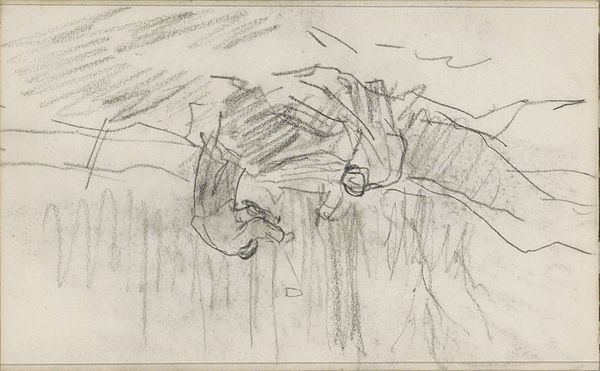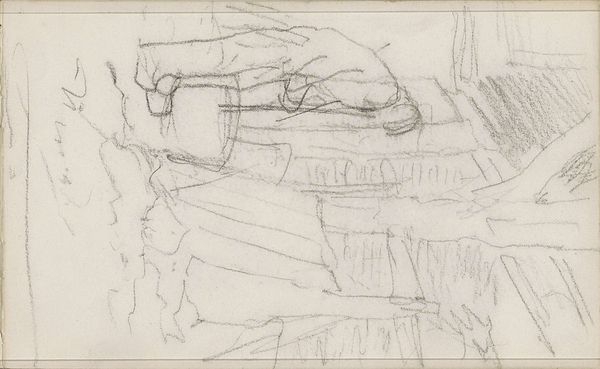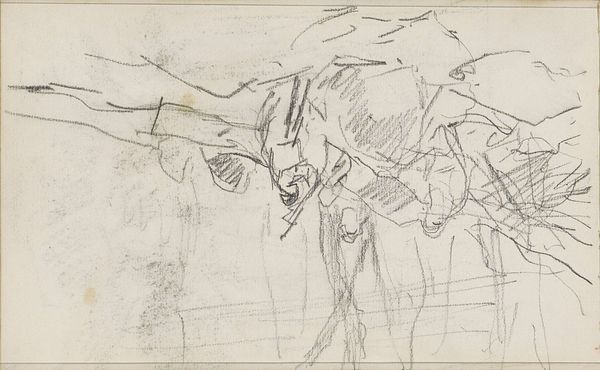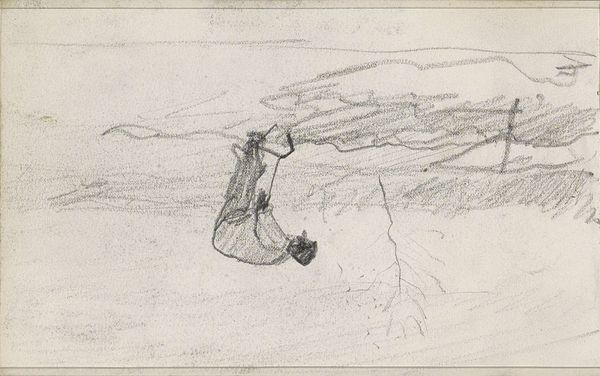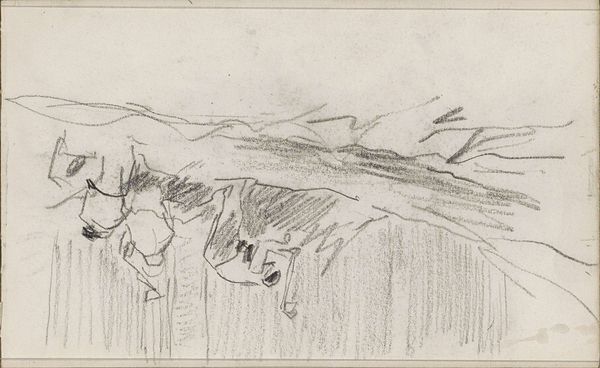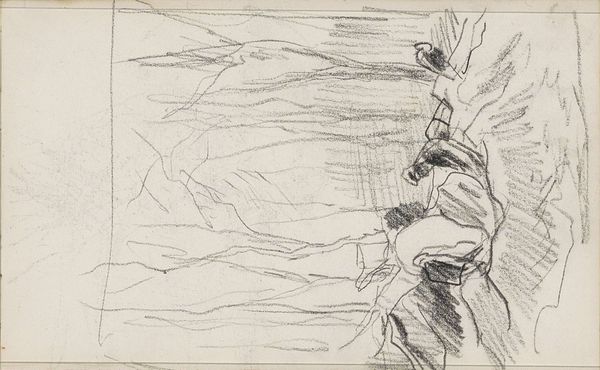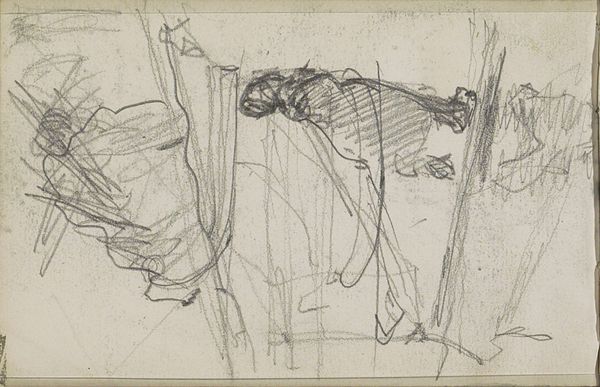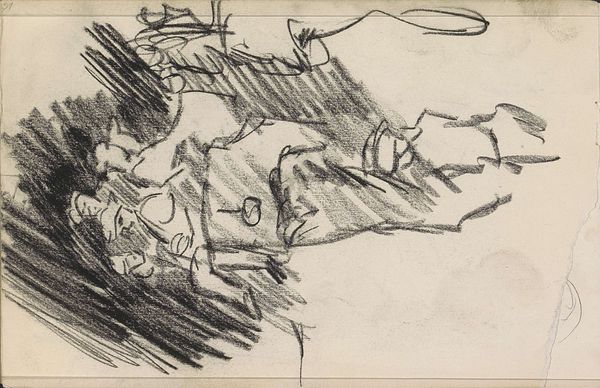
drawing, graphite
#
drawing
#
16_19th-century
#
dutch-golden-age
#
landscape
#
graphite
#
genre-painting
#
realism
Copyright: Rijks Museum: Open Domain
Editor: This drawing, “Woodcutter Chopping a Felled Tree” by Anton Mauve, probably made sometime between 1848 and 1888, is striking in its simplicity. Just graphite on paper, yet it evokes a sense of hard labor. What do you see in this piece? Curator: It’s important to consider the materiality itself: graphite. Cheap, easily accessible. This choice reflects a shift toward representing the working class, not idealized portraits. It suggests an interest in the daily lives and labor of common people, wouldn't you agree? How does that impact your view? Editor: I see your point. The roughness of the graphite echoes the roughness of the woodcutter's work. It feels… deliberate. Curator: Exactly! Consider the social context. This was a period of industrialization. Artists were grappling with changing landscapes and the role of labor. Mauve isn't romanticizing rural life, but perhaps documenting a disappearing way of working with raw materials. He uses minimal material for maximum symbolic effect, capturing the exploitation of both man and nature. What labor does this piece entail to create versus the labor within the piece, you see? Editor: I didn’t think about the work of the artist being parallel. I see it’s not just about what's depicted, but also how the work itself embodies the realities of labor and available resources. Curator: Precisely. Mauve's "Woodcutter" prompts us to question not only the depicted labor, but the economic conditions that make such art possible. It challenges traditional hierarchies by focusing on the process of its creation as much as its artistic merit. Editor: So, looking at art through the lens of materials and production can really open up its meaning. It changes how we see art history. Curator: It provides a crucial layer. Understanding how an artwork came to be, materially and socially, enriches our understanding of its message.
Comments
No comments
Be the first to comment and join the conversation on the ultimate creative platform.
